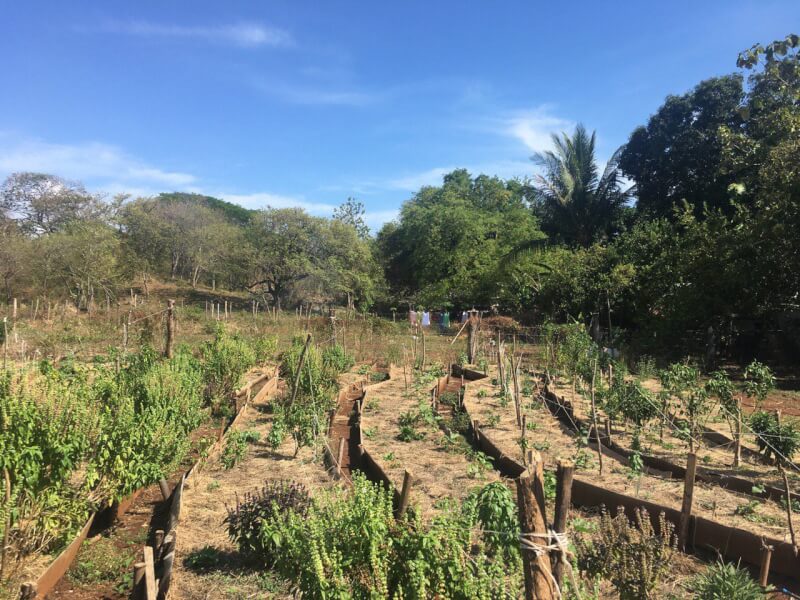09 February 2023 – Land use is responsible for about 22% of anthropogenic greenhouse gas emissions, which is why it is important to reduce emissions from land systems, for example related to deforestation and the conversion of other intact ecosystems to agricultural land. However, it is critical to also recognise that land systems provide a set of multifaceted contributions to the quality of life for people, beyond acting as a carbon sink. For example, deforestation does not only release soil carbon but can also destroy habitats of animals and livelihoods of humans living in these systems. Land systems should therefore be regarded and valued through pluralistic lenses and beyond a strict focus on one dimension. As we stated in the land systems chapter of the 2022 review article “ten new insights in climate science“:
“Managing land sustainably to provide food, livelihoods, nature and a sense of place and identity may yield the most substantial climate co-benefits”.
REGENERATIVE FARMING
Another pressing land use issue is the degradation of land use systems by intensive conventional agriculture/farming. In our recent deep dive paper for Earth4All we investigate regenerative agriculture as one potential form of resilient agricultural systems. We focus on ecosystem resilience, food security and ecosystem-focused farm management, while also highlighting how land systems are intertwined with people and communities.
Regenerative agriculture builds on the principles of minimal soil disturbance (no-till farming), permanent soil organic cover, and crop rotations. These three principles form the basis of healthy agricultural soil management. Regenerative agriculture systems in practice often go beyond these principles, and, depending on the respective farm’s approach, can add a broader focus on healthy ecosystems and farm biodiversity, ideas of circular farming systems, and also social dimensions of farming.
MORE RESILIENT AGRICULTURE
In our deep dive, we focus on the benefits of regenerative agriculture systems, without including managed grasslands or pastures. We use a dynamic global vegetation model – LPJmL- to simulate the biophysical effects of switching to regenerative agriculture by considering different ecological variables. Based on our simulations, regenerative agriculture contributes in multiple ways to a more resilient agriculture, mainly due to its positive effects on soil health:
- Generating humus-rich, undisturbed soils can store carbon, if managed properly in the long term and thus act as a carbon sink for a certain period of time.
- An increase in soil carbon stocks increases the soil water-holding capacity while a permanent soil cover reduces losses through evaporation. With water availability being one central “bottleneck” of agriculture in the future, especially in the face of rising extreme climate events like droughts, an increased soil water availability is a central cornerstone for resilient agricultural systems.
- Yield increases after a certain transition period from conventional to regenerative management, especially in water-scarce world regions.
Sustainable agriculture is dependent on healthy soils – which enables the provision of food security, especially in a changing climate.
HOW COULD A TURNAROUND TO REGENERATIVE AGRICULTURE UNFOLD?
Land systems do not have only ecological variables, but also a social side, as it is people (farmers, markets, consumers) shaping them. A transformation towards regenerative agricultural systems is therefore only possible if we also consider social and societal processes driving the change. Different social dynamics that have the potential to support a widespread transition to regenerative agriculture include: social contagion, social norms, social learning, and potential social tipping dynamics, like shifts in value systems or resource allocation.
While it is clear that soils need to be protected, agroecosystems diversified, and good livelihoods provided, how this is done in practice will have to be adapted depending on the regional context. There is no single silver bullet to rapidly scale up regenerative agriculture, nor a blueprint of what regenerative agricultural systems should look like in different regions. A complex interplay of factors is needed to scale up landscape regeneration. Farmers, including institutions around them, and governments have to become active for such a deep transition. Governments need to provide support to farmers during the transition period from conventional to regenerative, as the benefits of need time to unfold. It is also important to recognise that while land systems (and their carbon sinks) can play a role in climate change mitigation, they should not be used as a replacement for insufficient political action to reduce emissions from other sectors.
Read the Deep Dive Paper—-
Authors:
Luana Schwarz is a research associate at the Potsdam Institute for Climate Impact Research and Institute of Environmental Systems Research, University of Osnabrück.
Jannes Breier is a research associate at the Potsdam Institute for Climate Impact Research.
Jonathan Donges is a research group leader at the Potsdam Institute for Climate Impact Research and Stockholm Resilience Centre.






